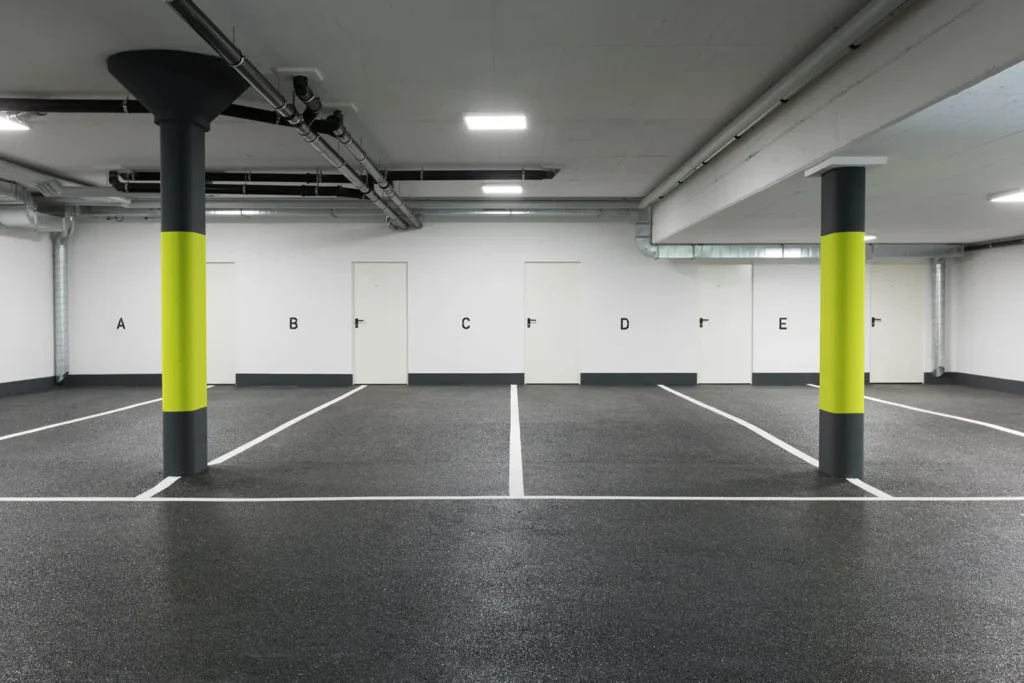Optimising Car Parks for Convenience and Safety in Residential Buildings
Sinead Campbell from London Flats Insurance gives an insight on optimising car parks to promote both convenience and safety.

Residential block car parks can be either a selling point, a drawback, or an outright safety concern for prospective leaseholders. They can either add convenience and comfort or be the root of neighbourly disputes- even injuries and thefts.
Block designs should be based in logistics, with architects and planners working towards and aesthetically pleasing but functional outcomes. Block managers can do little to alter the design of their sites, but there are options for improving less than ideal layouts and systems.
Here we’ll be discussing what should go into the planning of a block car park, as well as what managers can do to optimise the car parks they and their residents are working with.
Why Are Car Parks an Issue?
Urban living often means building up, rather than sprawling out. This means that hundreds of residents can live in a building with a relatively small footprint. This also means that parking spaces can be hard to come by.
In September 2023, the Department for Levelling Up, Housing and Communities (DLUHC) estimated that “there are around 4.98 million leasehold homes in England, of which 70% are flats”. If those figures are to be believed, it means we have around 3,486,000 people living in leasehold flats in England alone.
Some of those flats may be converted houses, some will be huge high-rise blocks, but with a record number of car owners in the UK (33,488,200 as of June 2023), the issue is plain to see. We have millions of people living in flats, the majority of whom will be car owners, and yet car parks often don’t provide the spaces needed to accommodate the numbers.
Where there are ample spaces, car parks can still be dangerous, frustrating and inconvenient for residents. Well-planned, secure car parks play a pivotal role in enhancing resident safety, and overall satisfaction.
The Importance of Well-Planned Car Parks
Obviously a well thought through car park design, executed brilliantly during the block build, is the ideal. As an essential component for resident satisfaction during their time at the address, the overall design should be carefully considered.
A great design comes down to effective organisation, intelligent use of space, and modern solutions such as electric vehicle charge points, space monitoring sensors, entry systems, and suitable lighting.
An intelligently planned car park ensures that residents can easily access and use their designated parking spaces without the hassles of navigating through congested or poorly laid out parking areas. This reduces time spent circling the building in search of an available space and therefore reduces emissions and frustration.
Adequate parking spaces, well-marked lanes, and clear signage all contribute to a seamless parking experience. To go the extra mile, modern technologies such as sensors and apps that enable residents to check the availability of parking spaces in real-time can be an added convenience.
Safety Considerations
Safety is paramount in any residential building, and car parks are no exception. Poorly lit, cramped, or disorganised parking areas can create the perfect environment for accidents.
Well-lit pathways, clearly marked pedestrian zones, and strategically placed security cameras contribute to a safer parking environment for both vehicles and residents. Well-planned car parks reduce the likelihood of traffic jams, which not only prevents accidents but also ensures that emergency vehicles can navigate the area quickly and efficiently when needed.
Addressing Overcrowding Issues
Overcrowded parking spaces are a common issue for residential buildings, leading to frustration and inconvenience for residents. Optimising car parks involves not only ensuring an adequate number of parking spaces but also implementing strategies to prevent overcrowding.
This may include introducing a system of permits, assigning specific parking spaces to residents, and regulating visitor parking. Implementing a fair and transparent allocation system for parking spaces can help alleviate tensions between residents and help to avoid any major disputes.
Clear communication about the parking rules (and consequences for violations) is essential in fostering a sense of community responsibility and cooperation.
Security Concerns
Security is a top priority for residents, and a well organised car park can contribute significantly to the overall security of the premises.
Installing surveillance cameras, access control systems and proper lighting in parking areas can deter criminal activities such as theft or vandalism. Additionally, restricted access to the parking facility through secure entry points ensures that only authorised individuals can enter the premises, enhancing the overall security of the building.
Conclusion
Optimising car parks for convenience and safety in residential buildings is a multifaceted task that involves careful planning, technology integration, and community engagement.
A well-designed parking system not only enhances convenience but also plays a pivotal role in ensuring resident safety and satisfaction. By addressing common issues such as overcrowding and security concerns, block managers can create a positive experience and boost the value of the properties they oversee.
For more information, please contact a member of the London Flats Insurance team on 020 7993 3034.
